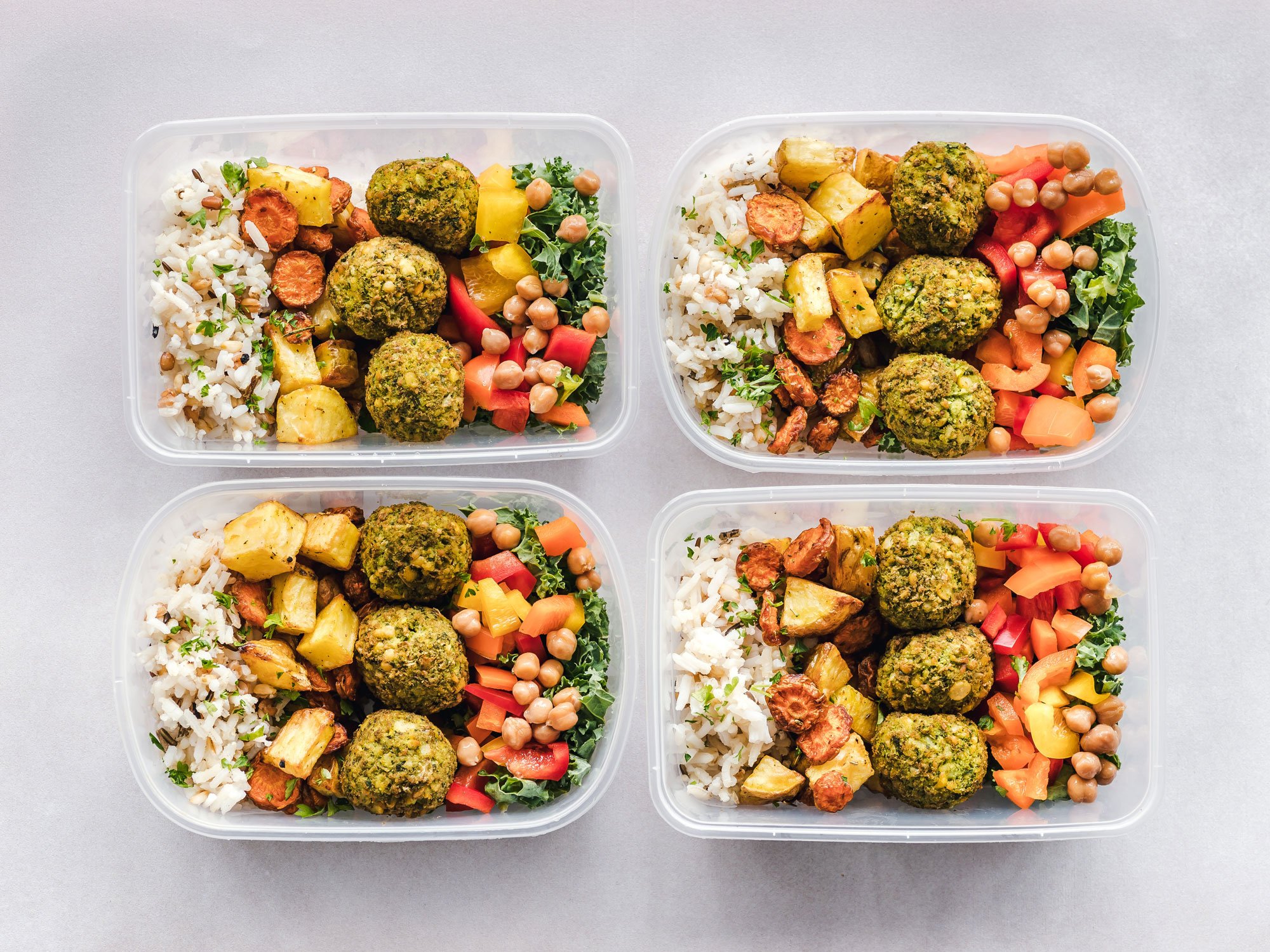
Getting Your Mindfulness Meditation Practice Started
Ever been so stressed that you told yourself, I need to start meditating. Well, now’s the time! (And just in time for National Stress Awareness Month
May 11, 2020

In 2019, an estimated 5 million employees in the United States worked from home at least ½ of the time. This number has likely surged in the first quarter of 2020 in light of the COVID-19 pandemic. More people now than ever are working from makeshift home offices to adhere to social distancing guidelines.
There are many benefits to working from home, including more flexibility for employees and reduced time needed for commuting. This extra time in the workday provides a unique opportunity to make self-care a priority; however, regularly practicing good stress management, healthy eating, and exercise, can require some time and careful planning, especially for those who may be new to teleworking.
So how can you stay healthy when working from home? The World Health Organization defines health as, “a state of complete physical, mental and social well-being and NOT merely the absence of disease or infirmity.” Given the COVID-19 pandemic, now is a vital time to establish a healthy work-life balance and make self-care a priority.

COVID-19 has created a lot of uncertainty, which can exacerbate stress and anxiety. Many people are now isolated in their homes, meaning you’ll need to think outside the box for ways to manage stress.
One simple practice that you can establish from home is daily meditation. Research shows that a regular meditation practice can help improve productivity and increase feelings of wellbeing. In this particular study, participants saw significant mental benefits from just 20-minutes of daily practice.
If you’re new to meditation, 20-minutes might feel like a long time. Try starting with 5 minutes and work up from there. There are tons of online resources for guided meditations to help walk you through the process.
Another challenge when working from home is finding ways to set boundaries between work time and personal time. Not having to physically leave the office can make it more difficult to distinguish when the workday is complete. Try not to fall into the trap of answering emails or working on projects at all times of the day.
Research shows that working during your personal time to meet increased work demands is associated with an increased likelihood of poor health conditions. To avoid this, try establishing regular work hours as best as you can. Shut down your computer and mute work-related notifications after that time. Communicate these intentions to your team and superiors and ask for their support.
Remember to stick to a regular sleeping routine. Since you no longer have the accountability of having to get to the office at a set time each morning, it’s up to you to maintain a regular sleeping schedule.Inadequate sleep makes it harder to gain muscle and lose fat. To prevent this negative impact on your body composition, aim to wake up at the same time every day.

Planning and preparing nutritious meals and snacks is key for achieving optimal health and well-being; however, working from home can present some unique challenges when it comes to maintaining optimal nutrition. Planning ahead and practicing mindful eating can help ensure you stay on track with your health goals.
Let’s be honest – it’s hard to argue with the convenience of food delivery apps, but keep in mind thatfrequently eating food prepared away from home increases the risk of obesity. Try to limit take out when working from home. Restaurants tend to serve oversized portions and prepare meals with excessive calories, sodium, and sugar.
The benefit of eating from home is that you have more control over the ingredients and cooking methods used to prepare the food you eat. To successfully execute this, it helps to plan meals and snacks in advance to make sure they’re balanced. Here are the types of foods you should include in a balanced meal plan:
Make sure you have healthy kitchen staples including fresh (non-processed) lean meats, healthy cooking oils (like olive oil or canola oil), dried whole grains and legumes, nuts/nut butter, fresh or frozen fruits, and vegetables, and dried herbs and spices.
Eating while distracted usually results in overeating. A 2019 study published in the Physiology and Behavior journal found that when people ate while using a smartphone or reading a book/newspaper, it was associated with increased caloric intake at meals. Avoid eating in front of your computer or while working and avoid keeping snacks at your desk. Better yet, establish a workspace that is separate from your eating space. Eating while distracted, whether from work or entertainment, tends to lead to excessive calorie intake.
If you find yourself making frequent visits to the kitchen or fridge due to stress or boredom, choose healthy alternatives instead. You can reorganize your kitchen space to hide tempting foods so that you don’t have to constantly rely on sheer willpower to avoid them. For example, keep sweets and junk food in a separate cupboard or a very high shelf outside of your line of sight.
Examples of healthy snacks include fruit, Greek yogurt, nuts, and nut butter, fresh-cut veggies, air-popped popcorn, whole-grain crackers, chicken or tuna salad, rice cakes. Pairing a high-fiber food with a source of protein or healthy fat will help tide you over between meals. For more ideas on healthy snacking, check out the InBody Blog Smart Snacking Guide.
Lastly, stick to a regular eating schedule. Irregular meal timing can negatively impact circadian rhythm and increase the risk of obesity. To prevent this, try eating your meals and snacks around the same time each day. This applies to weekends, too!
 Our bodies are meant to move, but no longer having a commute presents a challenge to meeting guidelines for exercise. How much should you be moving, and how can you stay motivated to reach your physical activity goals?
Our bodies are meant to move, but no longer having a commute presents a challenge to meeting guidelines for exercise. How much should you be moving, and how can you stay motivated to reach your physical activity goals?
When working from home, you no longer have a routine of walking to meetings, getting in and out of the office building, or walking to the break room. Unfortunately, increased time spent sitting can lead to reduced lean body mass, and increased total fat mass. This means you’ll have to make a more conscious effort to break up screen time.
Taking small physical activity breaks throughout the day has been shown to improve blood sugar responses after a meal and can help lower triglycerides. If this is something you struggle with, consider setting a timer to remind yourself to get up and move. If you’re able to, plan a short physical activity break outdoors as Vitamin D plays a critical role in immune function. If going outside isn’t an option, activities like yoga, bodyweight exercises, or free workout videos online are an easy way to get some exercise while still indoors.
Any activity is better than none; however, to get the most health benefits, the Physical Activity Guidelines for Americans recommend aiming for at least 150 minutes of moderate aerobic activity each week or 75 minutes of high-intensity aerobic exercise per week. Aim for 2 days of strength training per week in addition to cardio.
Staying motivated to work out while isolated at home can be difficult, especially if you’re used to exercising with a buddy or in a group setting. Tracking your progress with a body composition device can help keep you motivated and on track with your health goals.
Body fat percentage and muscle mass are better metrics to track your progress than just relying on your bathroom scale. This is because the scale can’t tell the difference between weight loss from fat vs. loss from hydration status, or worse – loss of lean body mass.
There are many devices available that can fit any budget. Here are some features to look for:
Find a device that tracks the following key measurements:
Whether you’re new to working from home or have been at it for a while, there is no better opportunity than the present to establish a healthy work-life balance. This includes self-care practices in areas of mental health, nutrition, and physical activity.
If you’re feeling stressed or anxious, try out meditation and make sure you’re prioritizing sleep. Plan ahead to ensure you’re eating a well-balanced diet. And finally, aim for at least 150 minutes of activity each week.
**
Stephanie Troxell is a Registered Dietitian, Certified Diabetes Educator and National Board Certified Health and Wellness Coach from Denver, Colorado. She specializes in theories of behavior change and has assisted thousands of clients from around the world in uncovering their own unique sources of internal motivation in order to promote lasting healthy habits.

Ever been so stressed that you told yourself, I need to start meditating. Well, now’s the time! (And just in time for National Stress Awareness Month

Raise your hand if you’re feeling: TiredStressedUnsure of yourselfPowerlessAnxious Now, shift your attention to your breath (you can lower your hand now). Without altering your

Research has shown that exercising in the water can reduce stress on our joints. But water can also relieve stress from another very important part
Article contributed by Geraldine Chapman
Geraldine Chapman is the Director of Information Marketing & Social Media at American Family Fitness in Richmond, VA. She’s been in the fitness industry professionally since 1997 as a personal trainer, group fitness manager, and fitness instructor. She has trained and certified in multiple fitness programs over the years. Her favorites to teach are barre, Active®, Blast®, and Power®. Geraldine graduated from Virginia Commonwealth University with a B.A. in Communication Arts & Design. She is also a Certified High-Performance Coach and Applied Neuro Strategist. She is passionate about researching autoimmune diseases and how lifestyle, fitness, nutrition, and mindset play a vital role in the prevention and management of autoimmune issues. When not working, you can find Geraldine with a camera in hand, enjoying quality time with her family and riding her motorcycle around town.
Stay connected with us through our monthly newsletter to get the latest news, updates, fitness tips and more.